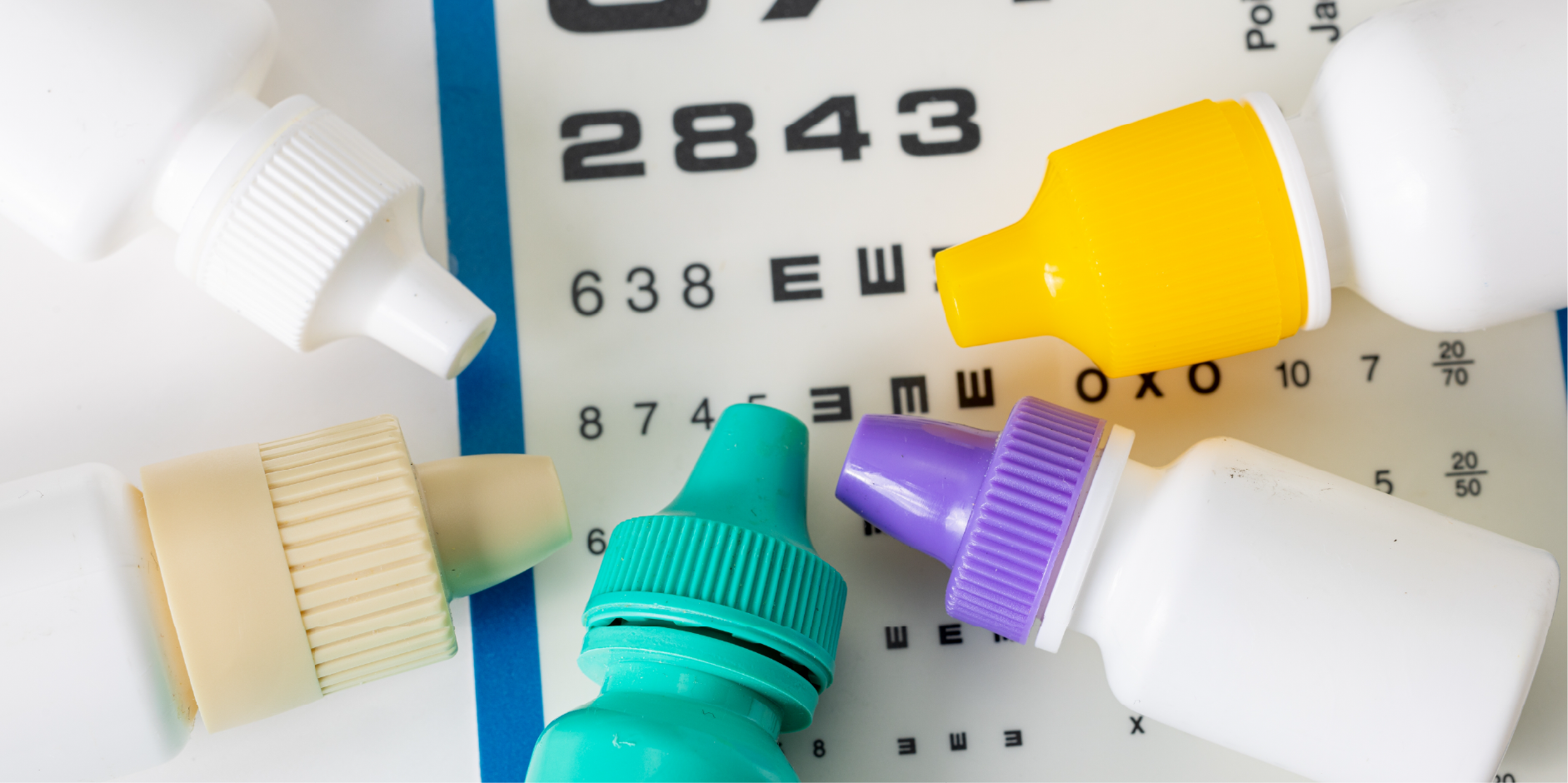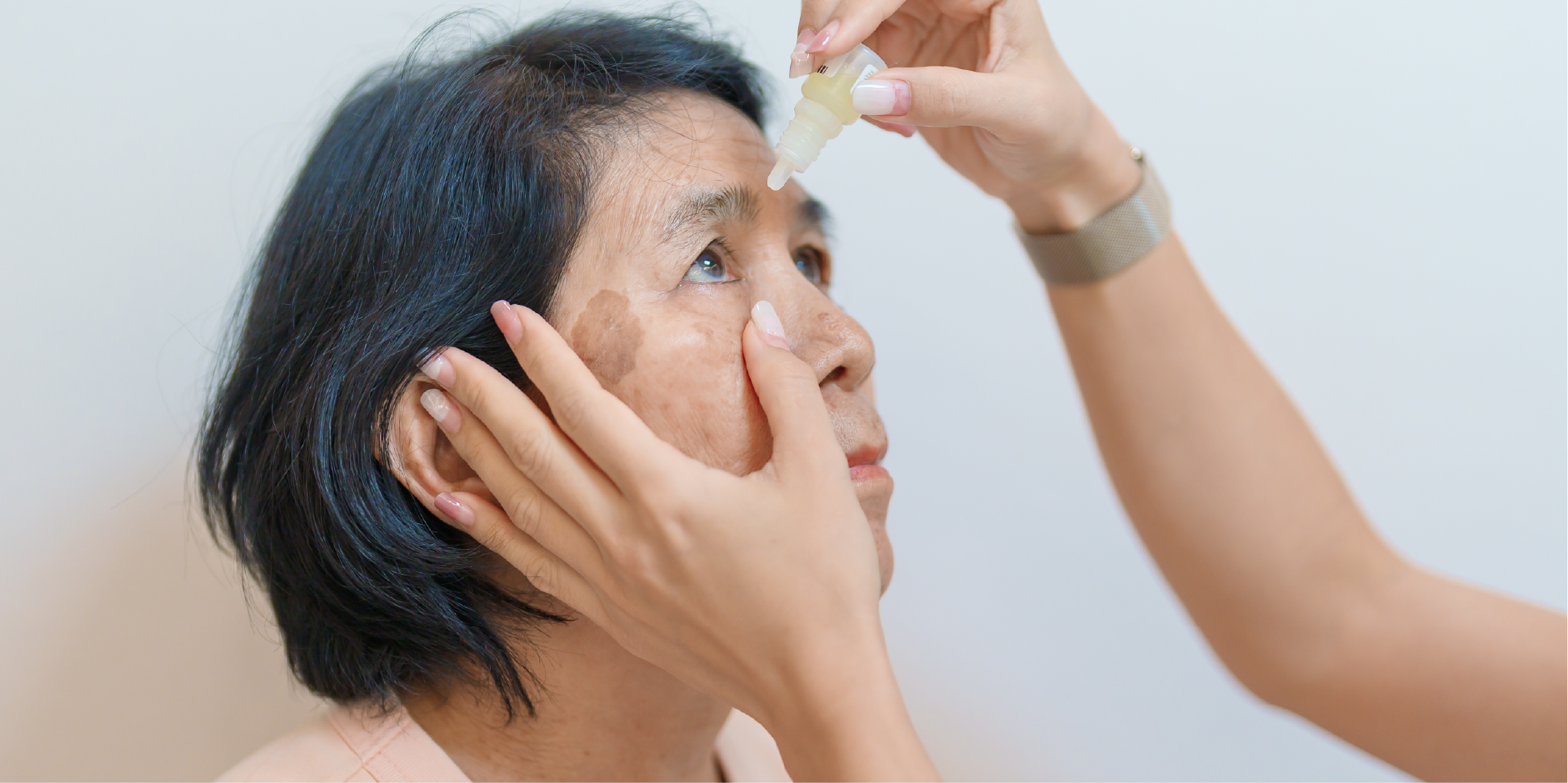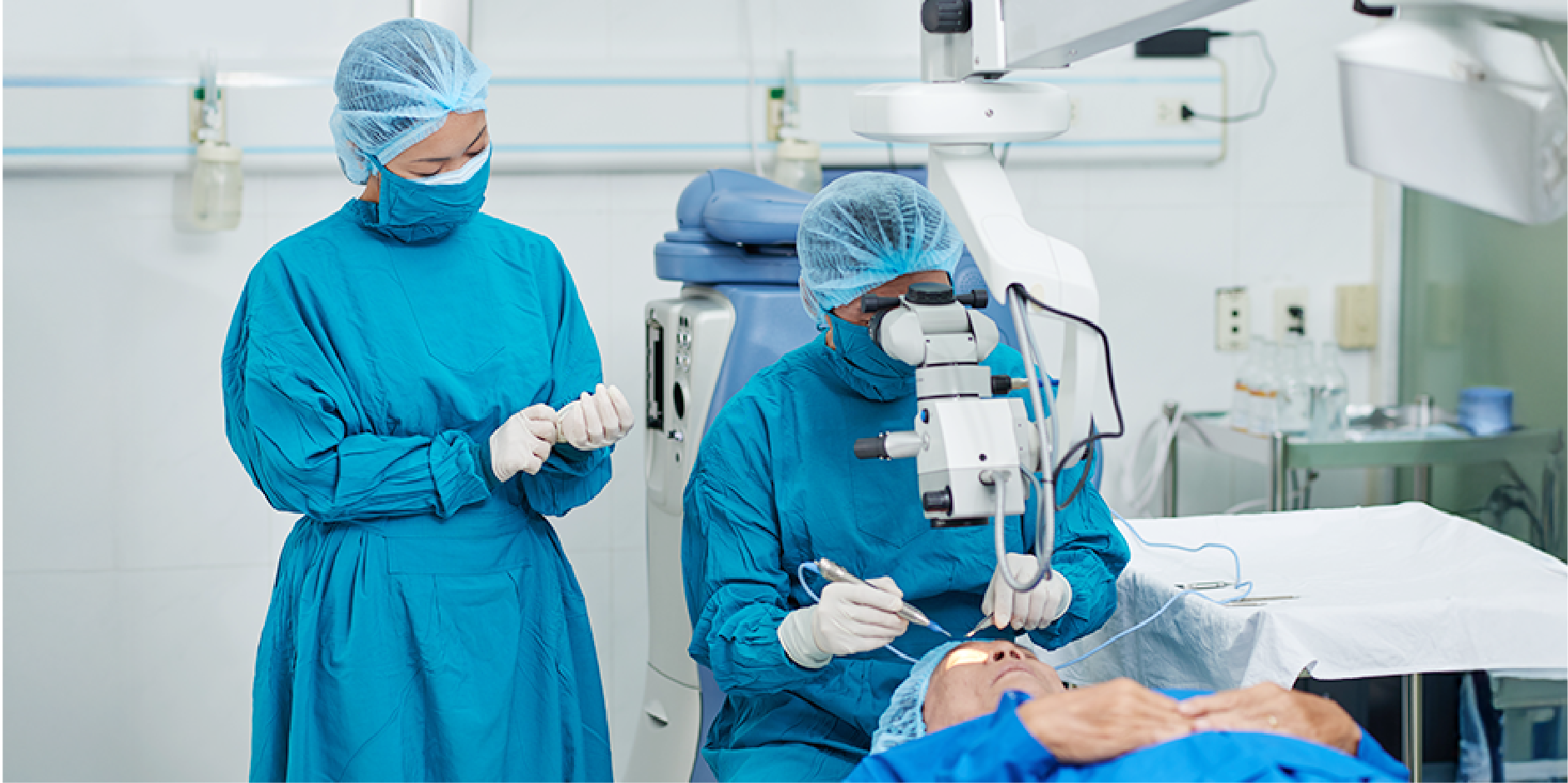Nội dung của trang này:
Nội dung của trang này:
Nguyên tắc điều trị
The goals of treatment are to prevent or reverse the angle closure
process, control IOP, prevent optic nerve damage, preserve visual function, and
maintain quality of life.
Setting Target Intraocular Pressure (IOP)
Lowering of the IOP is the only clinically established method of
treating glaucoma. Target IOP refers to the upper limit of a stable range of
measured IOPs seen as likely to prevent further optic damage. This needs
constant reevaluation and documentation at each visit. Target IOP depends on
different factors such as the patient’s age and life expectancy, pretreatment
IOP level, stage and rate of progression of glaucoma, presence of other risk
factors, risks and side effects of therapy, and patient preference. A lower IOP
can be targeted in the presence of disease progression. A therapeutic medical
trial on one eye may be done to determine the IOP lowering effectiveness of
medication except in the presence of severe glaucomatous damage or when IOP is
extremely high.
Pharmacological therapy
Medical Therapy
Initial treatment of acute angle-closure is directed towards lowering
the IOP to relieve acute symptoms and potential harm of high IOP. This remains
the most common method of lowering IOP. Most patients are treated immediately with
medications, followed by iridotomy as soon as feasible. In patients with ocular
surface disease, consider preservative-free formulations.
 Primary Angle-Closure Glaucoma_Management 1
Primary Angle-Closure Glaucoma_Management 1Preoperative Medical Therapy
Preoperative medical therapy serves to lower IOP to relieve the symptoms and signs so that laser iridotomy or iridectomy is possible. Once any angle closure component has been appropriately treated, management is similar to POAG. The IOP lowering mechanisms work by either reducing aqueous production by the non-pigmented epithelium of the ciliary body [eg alpha2-adrenergic agonists, beta-blockers, carbonic anhydrase inhibitors (CAI)] or increasing outflow pathways or by uveoscleral pathways (eg alpha2-adrenergic agonists, miotics, prostaglandin derivatives).
Primary Angle-Closure Glaucoma with Pupillary Block Mechanism
Reduction of the aqueous production by the use of systemic CAI (eg Acetazolamide), topical alpha2-selective adrenergic agonists (eg Apraclonidine, Brimonidine), or topical beta-blockers (eg Timolol). Hyperosmotics are the most effective agents (eg oral Glycerol, Mannitol) for the dehydration of the vitreous body. Examples are Glycerol (1-1.5 g/kg PO) and Mannitol (1-1.5 g/kg IV). Patients must be evaluated for kidney or heart disease prior to administration of hyperosmotics. Glycerol may alter blood glucose levels and should not be given to DM patients. Pupillary constriction may be seen from the use of topical parasympathomimetics (eg Pilocarpine 1% or 2%, Aceclidine 2% 2-3 times within 1 hour). Reduction of inflammation may be seen by the use of topical steroids every 5 minutes for 3 times, then 4-6 times daily.
Primary Angle-Closure Glaucoma with Plateau Iris Mechanism
Modest pupillary constriction may prevent further angle closure using topical parasympathomimetics (eg Pilocarpine 1%, Aceclidine 2%, Carbachol 0.75%).
Postoperative Medical Therapy (Intraocular Pressure Control)
The initial treatment option to lower the IOP is usually topical medications. Medical therapy should start with one drug. If the first choice of treatment has no effect or tachyphylaxis occurs, change the initial therapy rather than adding another drug. Consider balancing between the effectiveness of the medications and the side effects to achieve desired IOP. Pre-treatment baseline IOP values should be considered in the evaluation of efficacy of therapy. In order to maximize patient compliance and adherence, aim to utilize the minimum number of medications with minimum dosing frequency to achieve the target IOP. Surgery may, however, be initially considered in cases where there is severe glaucomatous damage, very high IOP, or concern regarding patient compliance. Systemic medications are only used as a temporary measure.
Topical Glaucoma Preparations
Any one or a combination of the following may be used depending on the severity of glaucoma, response to the medication, and ocular and health status of the patient. Always start with the least amount of medication to achieve a therapeutic response. Systemic absorption may take place via the nasal mucosa, which may lead to systemic effects. To minimize this, patients should be taught to apply finger pressure on the medial canthus for 1-2 minutes after instilling the eye drop.
 Primary Angle-Closure Glaucoma_Management 2
Primary Angle-Closure Glaucoma_Management 2Prostaglandin Analogues
Example drugs: Bimatoprost, Latanoprost, Latanoprostene bunod, Tafluprost, Travoprost and Unoprostone
Prostaglandin analogues are generally considered and approved as first-line treatment for reducing IOP. These are the first choices in cases of complete synechial closure. These lower IOP by increasing uveoscleral outflow. The IOP reduction is 25-35%. These appear effective and well tolerated (with few systemic side effects). These are an alternative for patients with contraindications to initial therapy with beta-blockers.
Beta-blockers
Example drugs: Betaxolol, Carteolol, Levobunolol, Metipranolol, Timolol
Beta-blockers have been a traditional choice of therapy as initial IOP-lowering agents due to their effectiveness, low cost, and tolerability. Along with prostaglandin analogues, these are licensed for first- and second-line use. Beta-blockers act by decreasing aqueous humor production. It can reduce IOP to 20-25%. These are associated with few ocular side effects and have a long duration of action, which allows once- or twice-daily dosing. Studies have shown that if a patient is on a systemic beta-blocker, the decrease in IOP with topical beta-blockers is likely to be reduced and, in this case, other drug classes should be considered first.
Alpha2-selective Adrenergic Agonists
Example drugs: Apraclonidine, Brimonidine
Alpha2-selective adrenergic agonists act by reducing aqueous humor production and increasing uveoscleral outflow. The IOP reduction is 20-25%. These may be given 1 hour prior to surgery or immediately afterwards to reduce the magnitude and frequency of acute postoperative IOP spikes and decrease bleeding due to the vasoconstrictor effect. Brimonidine exhibits highly selective alpha2-agonism (1000:1 over alpha1 agonism). Their selectivity results in the absence of both mydriasis and vasoconstriction. Long-term use of Apraclonidine is limited due to tachyphylaxis and increased risk of allergy with time.
Carbonic Anhydrase Inhibitors (CAI)
Example drugs: Brinzolamide, Dorzolamide
Carbonic anhydrase inhibitors reduce IOP by inhibition of carbonic anhydrase, resulting in decreased aqueous humor production. The IOP reduction is 20%.
Parasympathomimetics
Example drugs: Carbachol, Demecarium, Ecothiophate, Pilocarpine
Parasympathomimetics lower IOP by decreasing resistance to aqueous humor outflow from the anterior chamber and increasing trabecular outflow. They may, however, reduce uveoscleral outflow, which may cause a paradoxical rise in IOP in patients with severely compromised trabecular outflow. The IOP reduction is 20-25%. These have fewer systemic side effects than beta-blockers but more significant ocular side effects. Long-term post-op use of Pilocarpine may be given to patients with plateau iris syndrome, ie angle remains narrow despite a patent laser iridotomy.
Hyperosmotic Agents
Example drug: Topical Glycerol
Hyperosmotic agents may be given in cases of acute angle-closure attacks in the presence of an edematous cornea. The IOP reduction is 15-30%. Glycerol can cause irritation when given topically, and a local anesthetic may be given before application of glycerol to the cornea to reduce the likelihood of a painful response.
Rho Kinase Inhibitor
Example drug: Netarsudil
Rho kinase inhibitor lowers IOP by increasing outflow of aqueous humor through the expansion of the juxtacanalicular connective tissue and dilating the episcleral veins. The IOP reduction is 20-25%.
Systemic Glaucoma Preparations
Oral Carbonic Anhydrase Inhibitors (CAI)
Example drugs: Acetazolamide, Methazolamide
Oral carbonic anhydrase inhibitors lower IOP by decreasing aqueous production through inhibition of carbonic anhydrase. The IOP reduction is 30-40%. These may be given pre-operatively to acute angle-closure or severe glaucoma patients to prevent IOP spikes. These are for short-term use only due to their systemic side effects.
Hyperosmotic Agents
Example drugs: Glycerol, Isosorbide, Mannitol
Hyperosmotic agents dehydrate and reduce vitreous volume. These are the most effective agents to control acutely elevated IOP. The IOP reduction is 15-30%. These are for short-term use in cases where a large, rapid reduction in the IOP is required. Prior to use, patients must be evaluated for heart and kidney disease due to their potential to increase blood volume.
Adjunctive Medical Therapy
The medications may be combined with each other or serve as additional therapy to surgical treatment. Drugs belonging to the same class should not be combined. Additional drugs should be used only to achieve target IOP.
Fixed Combination Topical Therapy
Fixed combination topical therapy is used as an adjunctive therapy given to patients who fail to achieve their target IOP with monotherapy. This offers a convenient and simple dosing regimen and is preferred over the use of 2 separate agents. When available, fixed combination drugs may be preferable to 2 separate agents, which may improve compliance due to reduced dosing schedules. Generally, superior IOP-lowering efficacy is seen in combination therapy with agents from different classes than using the individual components alone. In employing fixed combination treatment, use agents that have both shown individual efficacy (but as individual agents, were insufficient in reaching the target IOP). Do not combine 2 drugs with the same mechanism of action.
Nonpharmacological
Patient
Education
Instruct
patients to avoid medicines that cause pupillary dilatation and induce an AACC
(eg decongestants, adrenergic agents, anticholinergics, antipsychotics,
antidepressants, and motion sickness medications). Teach patients how to
properly instill eye drops (intervals, lid closure, punctal occlusion). Do punctal
occlusion and eyelid closure for at least 3 minutes. If ≥2 drops are to be
instilled, wait at least 5 minutes between drops. Demonstrate the preferred
method and ensure the patient can do it.
Communicate to the patient and family the importance of compliance
since glaucoma is a chronic disease that requires continuous patient
cooperation for successful management. Advise patients with a family history of
PACD to undergo regular eye screening examinations for this condition. Inform
patients at risk for acute angle-closure about its symptoms and instruct them
to notify immediately should these symptoms occur. Provide them with educational
materials about PACD.
 Primary Angle-Closure Glaucoma_Management 3
Primary Angle-Closure Glaucoma_Management 3Phẫu thuật
Laser
Peripheral Iridotomy
Laser peripheral iridotomy is a definitive treatment for acute and
chronic angle-closure glaucoma with a pupillary block component. This is a preferred
surgical treatment due to its favorable risk-benefit ratio. It relieves pupil
block and can prevent the formation of PAS. In angle-closure with plateau iris
mechanism, peripheral laser iridotomy will help confirm the diagnosis and will eliminate
the pupillary block component, if present. This should only be done once
corneal edema (if present) or an AACC attack has been medically cleared. This
is also indicated in suspected cases of angle closure due to posterior
mechanisms or plateau iris to eliminate any possible pupillary block component.
Prophylactic
iridotomy is also indicated in the fellow eye, if it is similarly predisposed
(if the chamber angle is anatomically narrow), to prevent an attack. This is effective
as a preventive measure in patients at moderate to high risk of experiencing an
acute attack. Argon laser iridotomy has a superior closure rate than neodymium:
yttrium-aluminum-garnet (Nd:YAG) laser. Possible complications include visual
disturbances (eg glare, spots, halos, lines, shadows), temporary blurring of
vision, intra-op bleeding, transient elevation of IOP, inflammation, localized
lens opacities, and posterior synechiae. Rarely, it may cause cystoid macular
edema, retinal damage, malignant glaucoma, decompression retinopathy, retinal and
subhyaloid hemorrhage, and Descemet’s membrane detachment. Postoperative
management includes checking the IOP 30 minutes-2 hours after the surgery and
repeat by 24-48 hours. Repeat gonioscopy to check for PAS and/or plateau iris
configuration. Check the patency of the peripheral iridotomy.
Peripheral
Iridectomy
Peripheral iridectomy has been largely replaced by iridotomy in recent
years. This is an alternative to laser iridotomy when an acute attack cannot be
broken or when the cornea fails to clear sufficiently for laser iridotomy to be
performed. The advantages are that it can be done even when the cornea is
cloudy and permits deepening of the anterior chamber, breaking newly formed PAS.
The risks are similar as with other invasive ocular surgeries.
Laser
Peripheral Iridoplasty
Laser peripheral iridoplasty contracts the peripheral iris, resulting in
the widening of the anterior chamber angle and the re-opening of the
appositionally closed segments. This stretches the iris and deepens the chamber
angle to reduce the risk of progressive synechial closure. This can be used to
eliminate appositional angle closure caused by nonpupillary block mechanisms.
This may be done prior to laser iridotomy when an acute attack cannot be broken,
and the cornea is cloudy or hazy. This may be performed, in addition to
iridotomy, in cases of iris plateau configuration and when the angle remains narrow
despite a patent laser iridotomy (plateau iris syndrome). Complications include
iris atrophy and non-dilatable pupil (established), mild iritis, mydriasis, IOP
spikes, and corneal endothelial burns.
Lens
Extraction with Intraocular Lens Implant
Lens
extraction with intraocular lens implant significantly widens the anterior
chamber angle in angle-closure glaucoma and in eyes with narrow, occludable
angles based on various studies. This is helpful in cases where either the lens
thickness or anterior position is thought to be the main mechanism involved in
the acute episode of angle-closure. Recent data suggest that cataract and clear
lens extraction may be more effective at controlling IOP than traditional
therapy.
 Primary Angle-Closure Glaucoma_Management 4
Primary Angle-Closure Glaucoma_Management 4Anterior Chamber Paracentesis
Anterior chamber paracentesis may be done prior to laser iridotomy when an acute attack cannot be broken and the cornea is too cloudy or hazy. This provides rapid symptom relief and prevents further damage to the optic nerve and TM from the acutely elevated IOP. This may be used in cases that are refractory to medical management and have no access to laser.
Goniosynechialysis
Goniosynechialysis restores drainage function through mechanical lysis of adhesions that lead to angle scarring. Scarring that is present for <1 year tends to have better results.
Phacotrabeculectomy, Trabeculectomy, Phacoemulsification
Phacotrabeculectomy, trabeculectomy, and phacoemulsification reduce IOP and need for antiglaucoma agents and increase ACD. Phacoemulsification results in less post-op complications. Trabeculectomy may be needed in asymptomatic chronic angle closure with a pressure of >35 mmHg, >6 clock hours of PAS, and/or established glaucomatous optic neuropathy.
